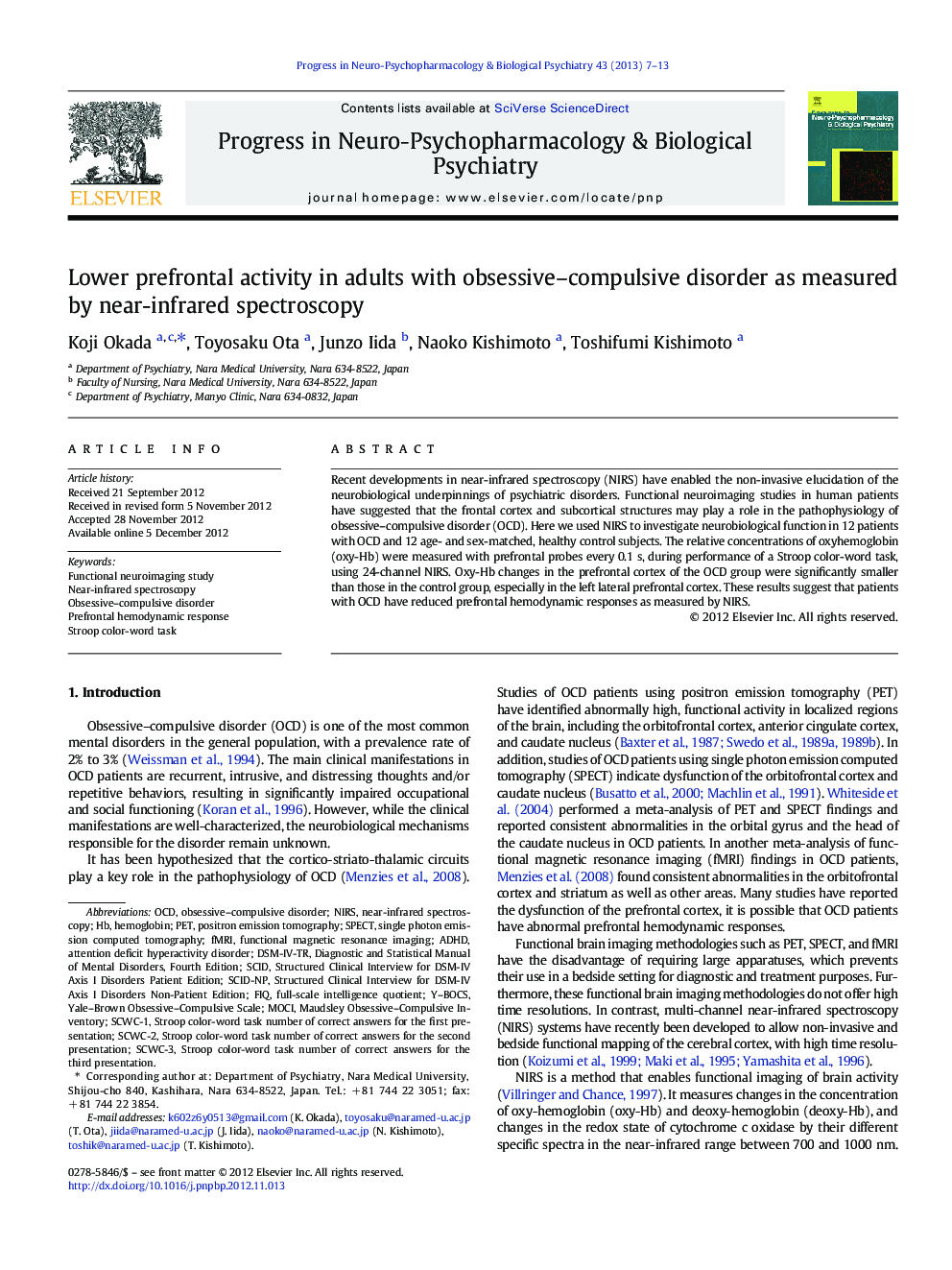| Article ID | Journal | Published Year | Pages | File Type |
|---|---|---|---|---|
| 5844717 | Progress in Neuro-Psychopharmacology and Biological Psychiatry | 2013 | 7 Pages |
Recent developments in near-infrared spectroscopy (NIRS) have enabled the non-invasive elucidation of the neurobiological underpinnings of psychiatric disorders. Functional neuroimaging studies in human patients have suggested that the frontal cortex and subcortical structures may play a role in the pathophysiology of obsessive-compulsive disorder (OCD). Here we used NIRS to investigate neurobiological function in 12 patients with OCD and 12 age- and sex-matched, healthy control subjects. The relative concentrations of oxyhemoglobin (oxy-Hb) were measured with prefrontal probes every 0.1Â s, during performance of a Stroop color-word task, using 24-channel NIRS. Oxy-Hb changes in the prefrontal cortex of the OCD group were significantly smaller than those in the control group, especially in the left lateral prefrontal cortex. These results suggest that patients with OCD have reduced prefrontal hemodynamic responses as measured by NIRS.
⺠We used NIRS to examine prefrontal hemodynamic responses in OCD patients. ⺠Oxyhemoglobin changes were measured during a Stroop color-word task, using NIRS. ⺠Oxyhemoglobin changes in OCD patients were lesser than those in control group. ⺠OCD patients have reduced prefrontal hemodynamic responses as measured by NIRS.
